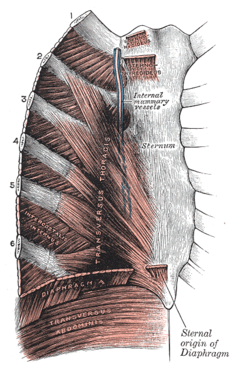
Costochondritis or Chest Wall Pain
Often chest pain is associated with heart attacks but costochondritis, or Tietze's syndrome, can be successfuly treated with medium frequency interferential therapy provided by the Infrex Plus. The process of inflammation of the costal cartilage can result in pain and the negative charge of the Infrex helps reduce the inflammation while reducing or eliminating the pain.
Specific protocols are provided for self treatment using interferential therapy at home. The goal is to eliminate the source of the costochrondritis pain.
The definition from Wikipedia:
Costochondritis, also known as chest wall pain, costosternal syndrome, or costosternal chondrodynia[1] is a benign[2] and often temporary inflammation of the costal cartilage, which connects each rib to the sternum at the costosternal joint, and is a common cause of chest pain.[1][3][4] Though costochondritis is often self-limited, it can be a recurring condition that can appear to have little or no signs of onset.[5] Treatment options are quite limited and usually involve a combination of rest, analgesics, or anti-inflammatory medications;[6] however, in cases with intractable discomfort, cortisone injections[6][7] or surgery may be necessary. Typically, costochondritis patients are instructed to refrain from physical activity to prevent the onset of an attack.[8]
Costochondritis symptoms can be similar to the chest pain associated with a heart attack.[7] Unexplained chest pain is considered a medical emergency until potentially life-threatening cardiac issues can be ruled out.[4][8] Severe cases of costal cartilage inflammation that also involve painful swelling are sometimes referred to as Tietze's syndrome, a term sometimes used interchangeably with costochondritis; however, some physicians view costochondritis and Tietze's syndrome as separate disease states due to the absence of costal cartilage swelling in costochondritis.[2][6]


